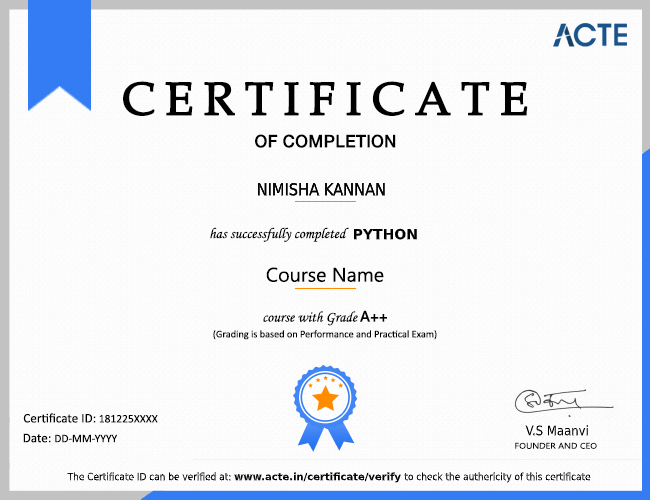Additional Info
An introduction to Machine Learning :
Machine learning is omnipresent in the industry these days. Organizations around the world are struggling to integrate machine learning into their functions and new opportunities for aspiring data scientists are growing multifold. But we have remarked a huge gap between what the industry needs and what’s on offer right now. Quite a large amount of people are not clear about what machine learning is. By end of this page, you will not only learn what is machine learning but also its different types, its ever-growing list of applications, the latest machine learning developments, the top experts in machine learning, amongst various other things.
Machine Learning is the science of educating machines on how to learn by themselves. Now, you might be considering – why on earth would we want machines to learn by themselves? Well – it has a slew of benefits.
For example – the task of washing and cleaning the floor. When a human does the job – the quality of outcome would vary. We get exhausted/bored following a few hours of work and the chances of getting sick also impact the outcome. Depending on the place – it could also be hazardous for a human.
On the other hand, if we can train machines to detect whether the floor needs cleaning and mopping and how much cleaning is required based on the condition of the floor and the type of the floor – machines would complete the same job far better. They can go on to do that job without becoming tired or sick!
This is what Machine Learning intends to do – enable machines to learn on their own. To answer the questions like :
- Whether the floor requires cleaning and mopping?
- How hard does the floor need to be cleaned?
Machines require a way to think and this is precisely where machine learning models help. The machines catch data from the environment and feed it to the machine learning model. The model then utilizes this data to predict things like
- Whether the floor requires cleaning or not, or
- For how long does it need to be washed, and so on.
How do machines learn?
Sadly, things which are normally intuitive to humans can be very difficult for machines. You only need to show cleaning and mopping to a human a few times – before they can perform it on their own. But, that is not how it works with machines. We need to collect a lot of data along with the desired outcomes to teach machines to perform specific tasks. This is specifically where machine learning comes into play. Machine Learning would help the machine guess the kind of cleaning, the intensity of cleaning, and duration of cleaning based on the conditions and nature of the floor.
Applications of Machine Learning in day-to-day life :
Now that you get the hang of it, you might be questioning what are some of the examples of machine learning and how does it affect our life? Unless you have been residing under a rock – your life is already heavily impacted by machine learning.
Let us look at a few examples where we use the result of machine learning already :
- Smartphones recognizing faces while taking photos or unlocking themselves
- Facebook, LinkedIn, or any other social media site supporting your friends and ads you might be interested
- Amazon suggesting you the products based on your browsing history
- Banks using Machine Learning to detect Fraud activities in real-time
Why is Machine Learning receiving so much attention recently?
Sounds thrilling! But this idea of teaching machines has been around for a long time. Recollect Asimov’s Three Laws of robotics? Machine Learning ideas and research have been about for decades. Nonetheless, there has been a lot of action and buzz recently. The glaring question is why is this happening now when machine learning has been around for several decades?
This growth is driven by a few underlying forces :
1. The volume of data generation is increasing significantly with a reduction in the cost of sensors (Force 1) Every time you take an action on any website, including Facebook and YouTube – you generate data for these companies. All connected devices including fitness bands, smartwatches, and connected equipment are producing data.
2. The cost of saving this data has reduced significantly (Force 2).
3. The cost of computing has reduced significantly (Force 3).
4. Cloud has democratized Compute for the crowd (Force 4).
These 4 forces join to create a world where we are not only creating more data, but we can store it cheaply and run huge computations on it. This was not likely before, even though machine learning techniques and algorithms were well known.
What tools are used in Machine Learning?
Several tools and languages are being used in machine learning. The exact option of the tool depends on your need and scale of operations. But, here are the most commonly accepted tools in machine learning :
Languages :
- R
- Python
- SAS
- Julia
- Java
- Javascript
- Scala
Databases :
Visualization tools :
Other tools commonly used :
Why R?
R is one of the main languages for data science. It produces excellent visualization features, which is imperative to explore the data before submitting it to any automated learning, as well as evaluating the results of the learning algorithm. Many R packages for machine learning are ready off the shelf and many modern methods in statistical learning are implemented in R as part of their development. There are yet other viable alternatives that benefit from similar advantages. If we consider Python, for example, the sci-kit-learn library provides all the tools that we will discuss in this course.
What are the Various algorithms used in Machine Learning?
- Supervised Learning
- Linear Regression
- Logistic Regression
- k-nearest neighbors
- Decision Trees
- Random Forest
- Gradient Boosting Machines
- XGBoost
- Support Vector Machines (SVM)
- Neural Networks
- Unsupervised Learning
- k means clustering
- Hierarchical clustering
- Neural Network
- Reinforcement Learning
How is machine learning distinct from automation?
If you are considering that machine learning is nothing but a new name of automation – you would be wrong. Most of the automation which has occurred in the last few decades has been rule-driven automation. For example – automating movements in our mailbox needs us to define the rules. These rules work in the same manner every time. On the other hand, machine learning helps machines learn from past data and change their decisions/performance accordingly. Spam detection in our mailboxes is handled by machine learning. Hence, it remains to evolve with time.
An Introduction to Machine Learning with R :
Machine learning with R is directed at participants who are not experts in machine learning but have some knowledge with scripting in general and R in particular. The workshop will offer a hands-on summary of typical machine learning applications in R, including unsupervised (clustering, such as hierarchical and k-means clustering, and dimensionality reduction, such as principle component analysis) and superintended methods.
Objectives and prerequisites :
The course intends at providing an accessible introduction to various machine learning methods and applications in R. The center of the course focuses on unsupervised and supervised methods of machine learning. The course includes numerous exercises to provide numerous opportunities to apply the newly acquired material. Participants are required to be familiar with the R syntax and basic plotting functionality. At the end of the course, the participants are anticipated to be able to apply what they have learned, as well as feel confident enough to explore and apply new methods.
R Can Be Intimidating In The Beginning :
R provides a scripting language with an unusual syntax. There are also hundreds of packages and thousands of functions to pick from, providing multiple ways to do each task. It can feel overwhelming.
- The best way to get started utilizing R for machine learning is to complete a project.
- It will require you to install and start R (at the very least).
- It will be given you a bird’s eye view of how to step through a small project.
- It will give you confidence, maybe to go on to your small projects.
Beginners Require A Small End-to-End Project :
Books and courses are frustrating. They give you loads of recipes and snippets, but you never get to see how they all fit together. When you are applying machine learning to your datasets, you are working on a project.
The process of a machine learning project may not be linear, but there are several well-known steps :
- Define Problem.
- Prepare Data.
- Evaluate Algorithms.
- Improve Results.
- Present Results.
The best way to get familiar with a new platform or tool is to work through a machine learning project end-to-end and cover the key steps. Namely, from loading data, summarizing your data, evaluating algorithms, and making some predictions. If you can do that, you have a template that you can apply on dataset after dataset. You can load in the gaps such as further data preparation and improving result tasks later, once you have more confidence.
What are some of the newest achievements and developments in machine learning?
Some of the latest accomplishments of machine learning include :
- Winning DOTA2 opposite the professional players (OpenAI’s development)
- Defeating Lee Sidol at the traditional game of GO (Google DeepMind’s algorithm)
- Google saving up to 40% of electricity in its data centers by applying Machine Learning
- Writing entire essays and poetry, and creating movies from scratch employing Natural Language Processing (NLP) methods (Multiple breakthroughs, the latest being OpenAI’s GPT-2)
- Creating & generating images and videos from scratch (this is both incredibly creative and worryingly accurate)
- Building automated machine training models. This is revolutionizing the field by growing the circle of people who can work with machine learning to include non-technical folks as well
- Creating machine learning models in the browser itself! (A Google creation – TensorFlow.js)
What are some of the Challenges in the Adoption of Machine Learning?
While machine learning has made tremendous progress in the last few years, some big challenges still need to be solved. It is an area of active research and I suspect a lot of effort to solve these problems in the coming time.
Huge data required :
It takes a large amount of data to train a model today. For example – if you want to differentiate Cats vs. Dogs based on images (and you don’t use an existing model) – you would need the model to be prepared on thousands of images. Compare that to a human – we typically describe the difference between Cat and Dog to a child by using 2 or 3 photos
High compute required :
As of now, machine learning and deep learning models need huge computations to achieve simple tasks (simple according to humans). This is why the use of specialized hardware including GPUs and TPUs is required. The cost of computations requires to come down for machine learning to make a next-level impact
Interpretation of models is difficult sometimes :
Some modeling techniques can provide us high accuracy but are difficult to explain. This can get the business owners frustrated. Imagine being a bank, but you cannot understand why you declined a loan for a customer!
New and better algorithms required :
Researchers are consistently watching out for new and better algorithms to address some of the problems mentioned above
More Data Scientists required :
Since the domain has grown so promptly – there aren’t many people with the skill sets needed to solve the vast variety of problems. This is assumed to remain so for the next few years. So, if you are considering building a career in machine learning – you are in good stead!
































